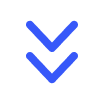Do you know why your customers call you? What are the real reasons behind each call? Do you know where each new sale originates from? You might have a hunch, but wouldn’t it be powerful to know with certainty? That’s where call tracking comes in.
Below, we’ll walk you through call tracking, ways to track calls, and the best platforms to consider when starting out.
What Is Call Tracking?
Call tracking involves monitoring and analyzing phone calls to attribute them to specific marketing efforts or customer interactions. It helps businesses determine which marketing channels or campaigns drive calls and generate high conversion rates.
Call tracking can be done with special contact center software or manually. The goal is to connect each call with a specific source and agent.

Ways to Track Calls
There are many ways to track calls, each with pros and cons. Let’s look at how call tracking works.
1. Dialed number identification service (DNIS)
DNIS is like a caller ID for businesses. It shows you the exact number a customer dialed to reach you. This helps track marketing campaigns.
Let’s say you have different phone numbers for each of your ads (like website banners, Google ads, PPC, and social media campaigns). When someone calls, DNIS tells you which of those numbers they dialed. Now you know exactly which ad worked and brought in that customer.

The more unique numbers you use, the more detailed information you get about your callers.
Businesses often use separate numbers for customer support, marketing campaigns, and special offers to know what brings in the most calls and how the agents spend their time.
2. Agent-provided tracking
To get more qualitative insights into customers’ reasons for calling, it’s common for call center agents to ask customers how they heard about the business or which campaign influenced them.
To understand why customers call, have agents ask how they heard about your business. Include this question in your customer service scripts. Agents should record the answer in the call logs, ideally using a drop-down menu for efficiency.
3. Caller-provided information
If it’s helpful but not essential to know where customers find you, simply have agents note when customers mention it. For example, they might mention an online ad or referral. If so, agents should record this source in their call notes or system.
You can encourage customers to share this information without directly asking, depending on your usual call handling techniques.
4. Web analytics integration
Connect your phone system with your website analytics (like Google Analytics) to track where your callers come from automatically:

You could assign dynamic phone numbers to website visitors based on their referral source (how someone arrives at your website). For example, someone from a Facebook ad would see a different number than someone who found you through a Google search.
It’s an easy way to track calls from digital campaigns without interrupting the customer journey or requiring agents to ask for information.
Benefits of Call Tracking
What benefits does call tracking offer?
Improved marketing ROI
Call tracking shows which marketing campaigns drive the most calls so you can spend your marketing budget wisely.
When you know something is working well, you can double down on your marketing strategy. If you have ineffective campaigns that you’re spending money on, you can halt them — with the confidence that you’re making the right decision.
Enhanced customer insights
The more you know about your callers, the better you can serve them.
Call tracking helps you understand:
- Why customers call: Are they looking for information, making a purchase, or needing support?
- What their preferences are: Do they prefer to speak to an agent or use self-service options?
- How they found you: Did they see an ad, visit your website, or get a referral?
Analyzing call data informs you of customer behavior and preferences. You get callers to the right agent faster with intelligent call routing, provide the information they need online or through automated systems, and tailor your service to their needs. Happier customers lead to a more efficient business.

Better data integrity
Call tracking helps you collect accurate and consistent information about your calls. Rather than have agents interpret and record call details, you use standardized options and provide them with a list of call reasons and outcomes. Everyone uses the same terminology and captures the same information. You can also integrate your call tracking software with other systems to automatically capture data like call duration, caller ID, and call outcomes.
With automated data collection, you can trust that the information you’re collecting is accurate and complete, use the data to make informed decisions about your marketing, sales, and customer service strategies, save time, and reduce errors.

Optimized staffing resources
Knowing why customers call helps you staff your call center more effectively. Call tracking shows you when you’re busiest. For example, if you see a spike in calls after every email campaign, you’ll know to schedule more agents during those times.
When you have enough agents available, customers get help faster, and available agents can dedicate more time to turning callers into happy customers.
Limitations of Call Tracking
While call tracking offers many benefits, be mindful of privacy concerns and compliance with relevant data protection laws.
Privacy and compliance concerns
Collecting customer data through call tracking may require careful handling to comply with regulations, especially GDPR. Check with your IT and security teams to confirm that call tracking aligns with your existing data privacy practices and any accreditations you hold. While you’re likely already covered, it’s wise to double-check and ensure your call tracking methods adhere to all relevant regulations.
Marketing attribution complexity
Leaning on your call center analytics for accurate decision-making requires confidence that what you see is fully accurate. However, complexities can arise when attributing calls to specific marketing channels, especially when customers interact with multiple touchpoints before calling.
If a customer encounters your brand through various channels (e.g., website, social media, and email), it’s hard to pinpoint the source that led to the call. Reusing phone numbers for different campaigns can also complicate determining which campaign drove the call. Some customers may call using a number they saved from a previous campaign, further affecting accurate attribution.
Without the right tracking technology and careful management of phone numbers, achieving 100% accuracy in attributing calls to specific marketing channels can be challenging.
Call quality
While call tracking effectively monitors the quantity of calls, assessing the quality of those conversations, especially those leading to conversions, often requires analytics tools.
Knowing which campaign generates the most calls is valuable, but it doesn’t reveal the nuances of those conversations or the factors influencing conversions. High conversion rates attributed to a specific campaign might be due to the skills of the agent handling those calls, not necessarily the campaign itself.
To understand call quality, combine raw call data (number of calls, sales, etc.) with insights gained through call monitoring and quality assurance processes.

You’ll also want to undertake a formal process for reviewing call recordings, evaluating script adherence, and assessing agent performance to gauge call quality and areas for improvement.
Top 3 Call Tracking Platforms
Basically, you can either adopt market-leading call center tools or go for standalone call tracking software. The benefit of opting for an all-in-one solution is that you get everything you need to run your call center operation:
- Simple agent interface for handling calls
- Self-service options like IVR and automated messaging
- Integration with your CRM and other line-of-business apps
- Comprehensive suite of analytics and reporting for inbound and outbound calls
- Potential for omnichannel support (email, web chat, SMS, social media, etc.)
Here are three of the best call tracking solutions available today.
1. Nextiva

Nextiva is an inbound call center platform that offers robust call tracking, analytics, and CRM integration to measure and optimize your customer interactions. You can track calls tied to specific marketing efforts, getting valuable metrics and insights into which campaigns drive the most valuable calls.
With multiple call reports and advanced voice analytics, you’ll see why customers call, identify peak call times, and adjust staffing levels accordingly. Nextiva sets you up to deliver better customer experiences and improve operational efficiency.
What’s more, as an all-in-one contact center solution, you get AI-assisted workforce management and real-time transcriptions and summaries of customer interactions. With Nextiva, you have everything you need to manage your call center in one place.
Best for: Businesses that need a unified customer experience solution that combines powerful call tracking with advanced analytics and automation.

2. CallRail

CallRail is a call tracking provider known for easy integration with digital marketing platforms. It provides dynamic number insertion and comprehensive reporting tools.
The platform associates specific phone numbers with individual marketing campaigns. For example, you can use a unique number on your billboard, website banner ad, or social media campaign. This makes it easy to see exactly which campaigns drive calls.
The system also records each call so you can review trends and inspect any anomalies.
Best for: Businesses that need a user-friendly call tracking solution that integrates with their existing marketing tools.
3. Invoca

Focused on AI-driven call attribution, Invoca helps businesses link calls to customer journey touchpoints, providing deep insights for high-level marketing optimization.
As well as checking the box for call tracking, Invoca automatically detects key steps during your calls. In the case of an automotive insurance policy, your call center agent answers an inbound call, and your call tracking software notes the number dialed and the associated campaign.
Next, it picks up signals throughout the call to check off key milestones like:
- Which type of insurance you need
- Whether you need any add-ons (windshield coverage, courtesy car, etc.)
- Whether any special pricing or discount codes have been used
- Successful completion of the policy purchase
If anything along the line doesn’t get checked off, like taking payment in a PCI-compliant manner, Invoca flags this along the way too.
Best for: Businesses that need to go beyond basic attribution and need deep insights into customer conversations.
Helpful Tips to Improve Tracking Phone Calls
Use dynamic number insertion (dynamic call tracking numbers)
Implement dynamic numbers that change based on the customer’s referral source. This ensures accurate tracking for web-based campaigns and any special support numbers.
When a visitor lands on your website or interacts with your online ads, the software displays a unique phone number based on their referral source. This could be a specific ad, keyword, or landing page.
When someone calls using one of these dynamic numbers, you know exactly where they came from. This eliminates guesswork and provides accurate data on campaign and marketing performance.
Some examples of dynamic number insertion include:
- Online advertising: Track calls from different ad campaigns, keywords, or landing pages.
- Offline campaigns: Measure each campaign’s effectiveness using unique numbers for each.
- Social media: Track calls generated from different social media platforms or specific posts.
Integrate with CRM
The more information sources you combine, the better the quality of insights you get.
Linking call tracking data with your CRM gives you a better understanding of the customer journey. You can see which marketing campaigns bring in calls and how those calls relate to other customer interactions, such as website visits, email opens, and purchase history. You create richer customer profiles, including contact details, communication preferences, past purchases, and support interactions, and customize interactions to potential customer needs.
CRM integrations eliminate the need for manual data entry, reducing the risk of errors and ensuring consistency across systems.
Scrub and update phone number formats
Just like any database, the quality of your insights depends on the quality of the data you input. This is why scrubbing and updating your phone number formats is essential.
All phone numbers should be formatted correctly and consistently, including the correct country codes, area codes, and any necessary formatting for international numbers. Inaccurate formatting can lead to missed calls or misattribution of call sources.
If you reuse phone numbers for different campaigns, clearly label and track them to attribute calls to the correct campaigns. Also, make sure your phone number data complies with international calling regulations and data protection standards. Obtain necessary consent for data collection, and adhere to relevant privacy laws.
Get Robust Call Tracking for Your Contact Center with Nextiva
You can track calls in many ways. The more comprehensive you are, the better and more accurate insights you gain. Getting your call center agents to ask where a customer first learned about your business or promotional offer is one thing, but detailed, automated call tracking as part of your contact center must be your goal.
Integrated platforms like Nextiva offer reporting and analytics dashboards that provide key insights into call patterns, call tracking metrics, campaign performance, and agent performance to help you make informed decisions and optimize your contact center operations. Agents can get on with what they do best and not worry about asking probing questions at the end. Administrators and supervisors receive all the information they need to continuously optimize your call center.

Ready to take the market-leading AI-powered contact center for a ride? Explore Nextiva’s call center options here.
Top AI-Powered Contact Center Solution
Transform your customer interactions with a contact center platform that saves you time and money, reduces agent and supervisor stress, and flexibly adapts to fit your needs.

















 Customer Experience
Customer Experience 









